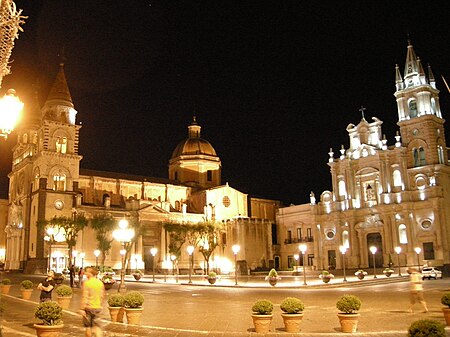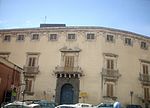Acireale
AcirealeCities and towns in SicilyCoastal towns in SicilyMunicipalities of the Metropolitan City of Catania

Acireale (Italian: [ˌatʃireˈaːle]; Sicilian: Jaciriali, locally shortened to Jaci or Aci) is a coastal city and comune in the north-east of the Metropolitan City of Catania, Sicily, southern Italy, at the foot of Mount Etna, on the coast facing the Ionian Sea. It is home to numerous churches, including the Neo-Gothic St. Pietro's Basilica, St. Sebastiano's Basilica in the Sicilian Baroque style, and the 17th century Acireale Cathedral, and a seminary, for the training of priests. Acireale is also noted for its art and paintings: the oldest academy in Sicily, the "Accademia dei Dafnici e degli Zelanti", is located here.
Excerpt from the Wikipedia article Acireale (License: CC BY-SA 3.0, Authors, Images).Acireale
Piazza Giuseppe Garibaldi,
Geographical coordinates (GPS) Address Nearby Places Show on map
Geographical coordinates (GPS)
| Latitude | Longitude |
|---|---|
| N 37.616666666667 ° | E 15.166666666667 ° |
Address
Monumento ai Caduti
Piazza Giuseppe Garibaldi
95024
Sicily, Italy
Open on Google Maps







